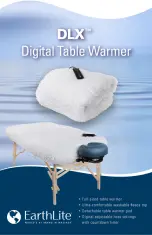
9
ASSEMBLY INSTRUCTIONS
A dented, rusted or damaged propane cylinder may be
hazardous and should be checked by your cylinder
supplier. Never use a propane cylinder with a damaged
valve connection.
The propane cylinder must be constructed and marked
in accordance with the specifications for LP gas
cylinders of the U.S. Department of Transportation
(DOT) or the standard for cylinders, spheres and
tubes for transportation of dangerous goods and
commission, CAN/CSA-B339.
The cylinder must have a listed overfilling prevention
device.
The cylinder must have a connection device compatible
with the connection for the appliance.
The cylinder used must include a collar to protect the
cylinder valve.
Never connect an unregulated propane cylinder to the
heater.
Screw regulator onto gas hose. Do not cross-thread.
Tighten securely. Attach regulator to cylinder. Complete
attachment.
Install cylinder.
Do not store a spare LP-gas cylinder under or near this appliance;
Never fill the cylinder beyond 80 percent full;
“Place the dust cap on the cylinder valve outlet whenever the cylinder is not
in use. Only install the type of dust cap on the cylinder valve that is provided with
the cylinder valve. Other type of caps or plugs may result in leakage of propane.”






































